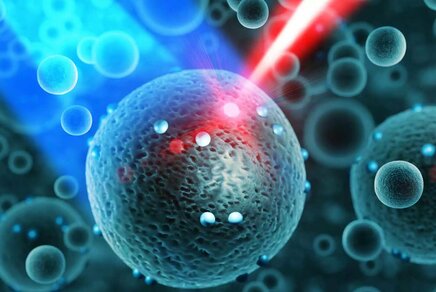Quantify molecular processes with single molecule resolution
The MBx group creates concepts in the field of molecular biosensing with diagnostic and therapeutic healthcare perspectives. Combining nanotechnology, molecular engineering and single molecule imaging technologies we aim to measure with ultimate sensitivity biomolecules implicated in a variety of diseases, such as cancer, immunology, and cardiology.
Read moreResearch Areas
Work with us!
Building a better future for our global society? Join our research team and be part of the thriving community at Eindhoven University of Technology.
Working at the department of Biomedical Engineering or Applied Physics
We are continuously looking for enthusiastic and motivated students and postdocs. If you would like to work in a great environment at TU/e, please contact one of the staff members for more information.
Meet some of our Researchers
Recent Publications
Our most recent peer reviewed publications
-
Tania Patiño,Joaquin Llacer-Wintle,Sílvia Pujals,Lorenzo Albertazzi,Samuel Sánchez
Unveiling protein corona formation around self-propelled enzyme nanomotors by nanoscopy
Nanoscale (2024) -
Teodora Andrian,Yolanda Muela,Lidia Delgado,Lorenzo Albertazzi,Silvia Pujals
A super-resolution and transmission electron microscopy correlative approach to study intracellular trafficking of nanoparticles
Nanoscale (2023) -
M.C.M.D. de Conti,S. Dey,W.E. Pottker,F.A. La Porta
An overview into advantages and applications of conventional and unconventional hydro(solvo)thermal approaches for novel advanced materials design
Materials Today Sustainability (2023) -
Pradip Das,Silvia Pujals,Lamiaa M.A. Ali,Magali Gary-Bobo,Lorenzo Albertazzi,Jean-Olivier Durand
Super-resolution imaging of antibody-conjugated biodegradable periodic mesoporous organosilica nanoparticles for targeted chemotherapy of prostate cancer
Nanoscale (2023) -
praesentium
Super-resolution imaging of antibody-conjugated biodegradable periodic mesoporous organosilica nanoparticles for targeted chemotherapy of prostate cancer
Nanoscale (2023)
News






Education
Check out all our courses
The research group Molecular Biosensing for Medical Diagnostics provides courses and projects in the bachelor's and master's programs of the departments of Biomedical Engineering and Applied Physics. Furthermore, we offer a broad range of projects for students to work on in the research group.
PhD Theses
Video on Plasmonic Biosensing using Metal Nanoparticles
Metal nanoparticles provide the possibility to detect single molecules without the need for labeling, enabling the direct detection of non-absorbing species [1]. A molecule that binds to receptors on the surface of a particle induces a change in the local refractive index that in turn results in a change of color due to a shift of the plasmon resonance [2,3]. This animation illustrates the real-time detection of plasmon shifts induced by molecules binding to functionalized single gold nanorods. The plasmon shifts are measured by monitoring scattering intensities of many particles simultaneously and in real-time [4].
Contact
-
Visiting address
Imran GüneşFluxGroene Loper 195612 AE EindhovenNetherlands -
Visiting address
Valerie HermansNadia van der VeldenHuijsweg4401CA WetsingeNetherlands -
Postal address
Stefan Dubois MADepartment of Biomedical Engineering & Department of Applied PhysicsP.O.Box 5135600 MB EindhovenNetherlands -
Postal address
Lex van den BroekIse KoningChevressonboulevard5403NJ RavensteinNetherlands -
SecretarySimon Ramautar MPhilvan Vlietlaan6651KG Haarlo
-
SecretaryFinn Verhoeven BAMeyerbaan8421PG Oosterwolde


